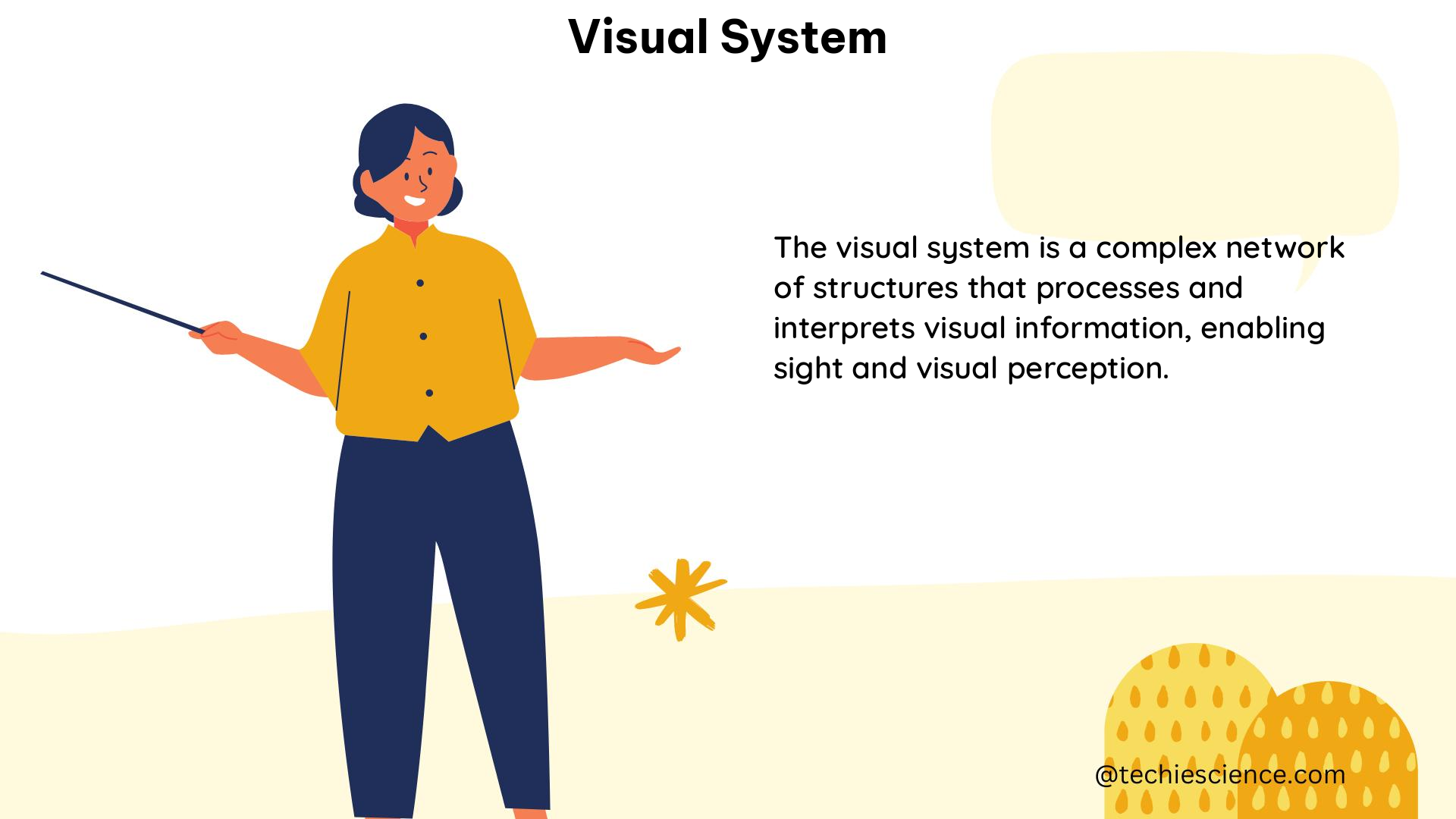The visual system is a complex and intricate network of structures and processes responsible for the perception, processing, and interpretation of visual information. This comprehensive guide delves into the quantitative aspects of the visual system, providing a detailed exploration of the various techniques and methods used to assess its functionality.
Visual Field Testing: Mapping the Boundaries of Sight
Visual field testing is a crucial tool in the assessment of the visual system. It measures the sensitivity of an individual’s visual field, determining the threshold at which a stimulus can be detected in different regions of the visual field. This information is presented in the form of numerical sensitivity plots and grayscale maps, providing quantitative data on the person’s visual sensitivity.
Numerical Total Deviation Map
The numerical total deviation map compares the patient’s visual sensitivity to an average normal individual of the same age. This comparison allows for the identification of any generalized decreases in visual sensitivity, which can be indicative of various underlying conditions.
Numerical Pattern Deviation Map
The numerical pattern deviation map, on the other hand, focuses on discrepancies within a patient’s visual field. By correcting for generalized decreases in visual sensitivity, this map highlights specific areas of the visual field that exhibit abnormalities, providing valuable insights into the nature and extent of the visual impairment.
Eye Tracking: Quantifying Visual Information Processing

Eye tracking is another powerful technique used to assess the visual system. This method measures the eye movement responses to different visual stimuli, providing quantitative data on the quality of visual information processing.
Remote Eye Tracker and Preferential Looking Paradigm
The eye tracking process typically involves the use of a remote eye tracker and a four-choice preferential looking paradigm. This setup allows for the measurement of reflexive eye movement responses to specific visual modalities, from which output parameters such as reaction times, fixation accuracy, and fixation duration are calculated.
Quantifying Viewing Behavior
These quantitative measures of eye movement responses provide valuable insights into a child’s viewing behavior, offering a window into the underlying processes of visual information processing. This information can be particularly useful in the assessment and monitoring of visual development in children.
Visual Prostheses Evaluation: Assessing Functional Improvements
In addition to visual field testing and eye tracking, researchers have developed methods to compare the efficacy of different visual prostheses in improving visual function in patients with very low vision. One such approach is the Basic Assessment of Light and Motion (BaLM) test battery.
BaLM Test Battery
The BaLM test battery was developed to assess four basic visual dimensions: light perception, temporal resolution, localization of light, and motion. By evaluating the performance of visual prostheses across these dimensions, the test provides quantitative data on the visual function of patients with very low vision, allowing for a more comprehensive understanding of the impact of these devices on visual rehabilitation.
Quantitative Measures of the Visual System
The visual system can be quantified through various metrics and measurements, providing a deeper understanding of its functionality. Some key quantitative measures include:
Visual Acuity
Visual acuity is a measure of the sharpness or clarity of vision, typically expressed as a fraction or decimal value. It is often assessed using standardized eye charts, such as the Snellen or Landolt C charts, and can be used to evaluate the overall performance of the visual system.
Contrast Sensitivity
Contrast sensitivity refers to the ability to detect differences in brightness between an object and its background. This measure provides insights into the visual system’s ability to process and interpret subtle changes in luminance, which is crucial for tasks such as object recognition and navigation.
Color Vision
Color vision assessment involves the evaluation of an individual’s ability to perceive and differentiate between various color hues and shades. This quantitative measure can be used to identify color vision deficiencies, which may be indicative of underlying neurological or ophthalmological conditions.
Binocular Vision
Binocular vision refers to the integration of visual information from both eyes, enabling depth perception and three-dimensional spatial awareness. Quantitative measures of binocular vision, such as stereoacuity and fusional vergence, provide insights into the coordination and synchronization of the visual system.
Temporal Resolution
Temporal resolution is the ability of the visual system to detect and process changes in visual stimuli over time. This measure can be assessed using techniques like flicker fusion frequency, which determines the rate at which a flickering light appears to be steady.
Spatial Resolution
Spatial resolution refers to the visual system’s ability to distinguish between closely spaced visual elements. This can be quantified through measures such as visual field size, which determines the extent of the visual field, and visual field density, which assesses the distribution of photoreceptors within the retina.
Conclusion
The visual system is a complex and multifaceted entity, and the quantitative assessment of its various components is crucial for understanding its functionality and identifying potential abnormalities. This comprehensive guide has explored the key techniques and measures used to evaluate the visual system, providing a valuable resource for researchers, clinicians, and students interested in the field of visual science.
Reference:
- Eyerounds.org. (n.d.). Visual Field Testing. [online] Available at: https://eyerounds.org/tutorials/VF-testing/ [Accessed 1 Jun. 2023].
- Iovs.arvojournals.org. (2016). Quantitative Assessment of Visual Function in Children with Very Low Vision. [online] Available at: https://iovs.arvojournals.org/article.aspx?articleid=2126684 [Accessed 1 Jun. 2023].
- Ncbi.nlm.nih.gov. (2016). Quantitative Assessment of Visual Function in Children with Very Low Vision. [online] Available at: https://www.ncbi.nlm.nih.gov/pmc/articles/PMC4993407/ [Accessed 1 Jun. 2023].

Hi, I am Sanchari Chakraborty. I have done Master’s in Electronics.
I always like to explore new inventions in the field of Electronics.
I am an eager learner, currently invested in the field of Applied Optics and Photonics. I am also an active member of SPIE (International society for optics and photonics) and OSI(Optical Society of India). My articles are aimed at bringing quality science research topics to light in a simple yet informative way. Science has been evolving since time immemorial. So, I try my bit to tap into the evolution and present it to the readers.
Let’s connect through